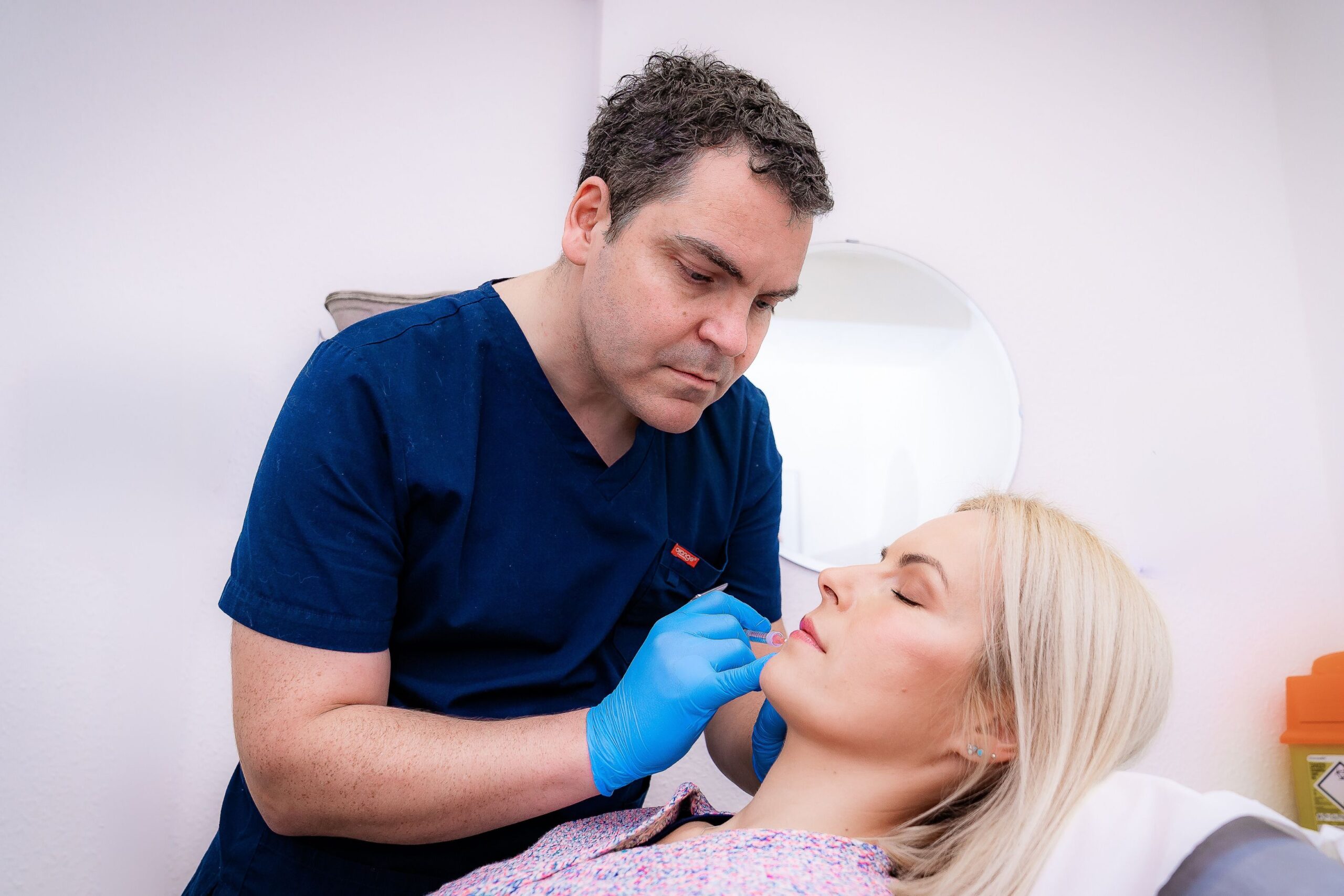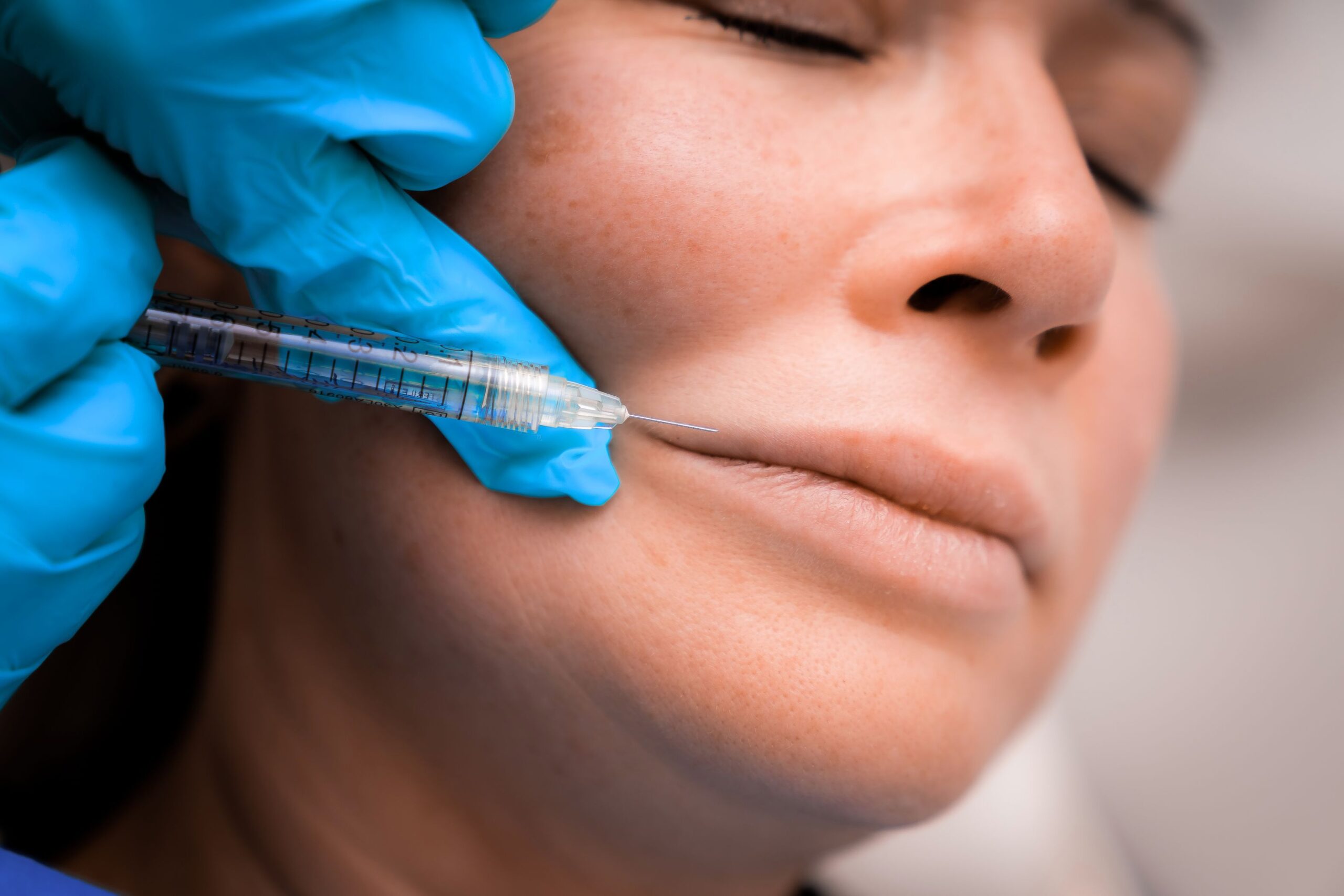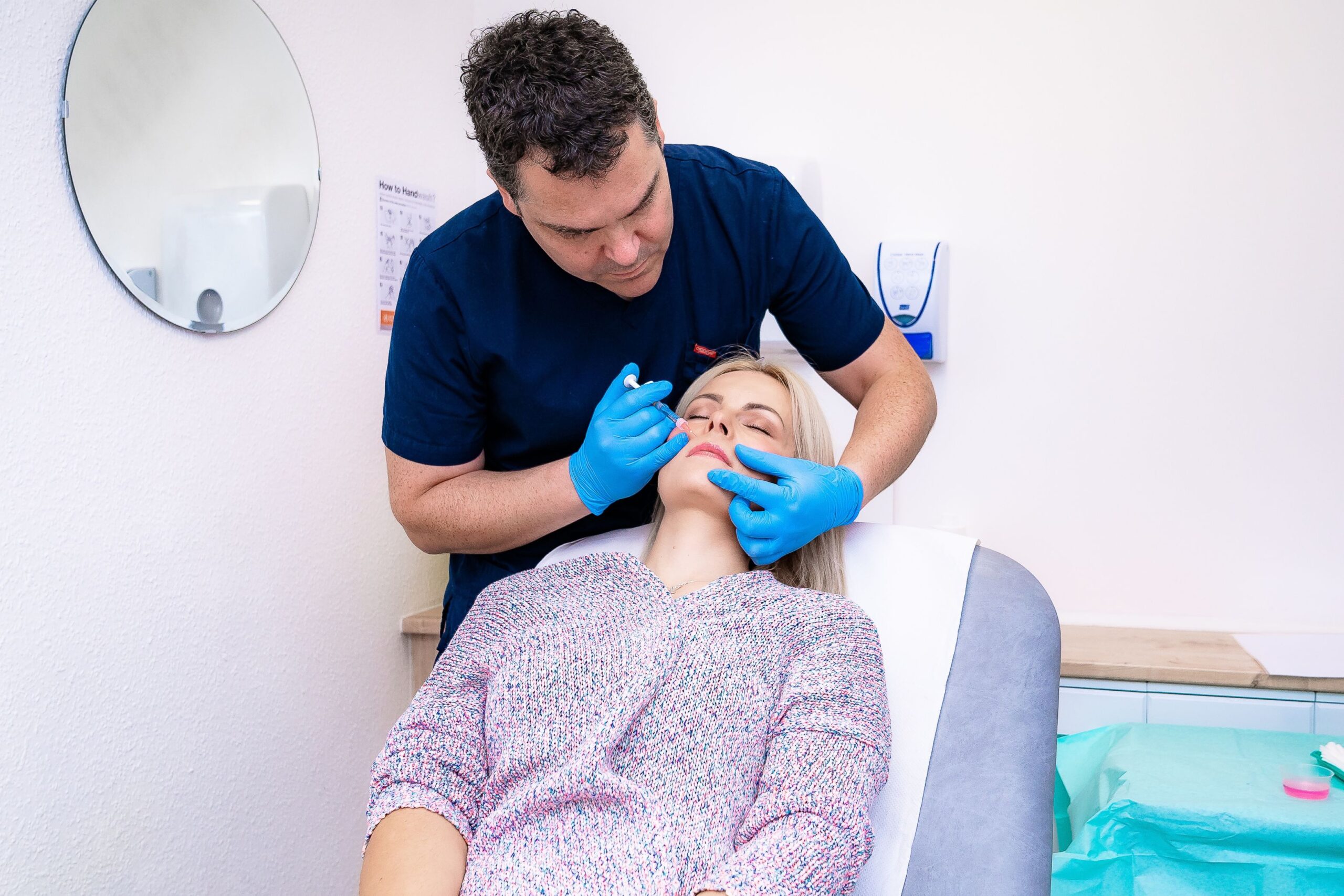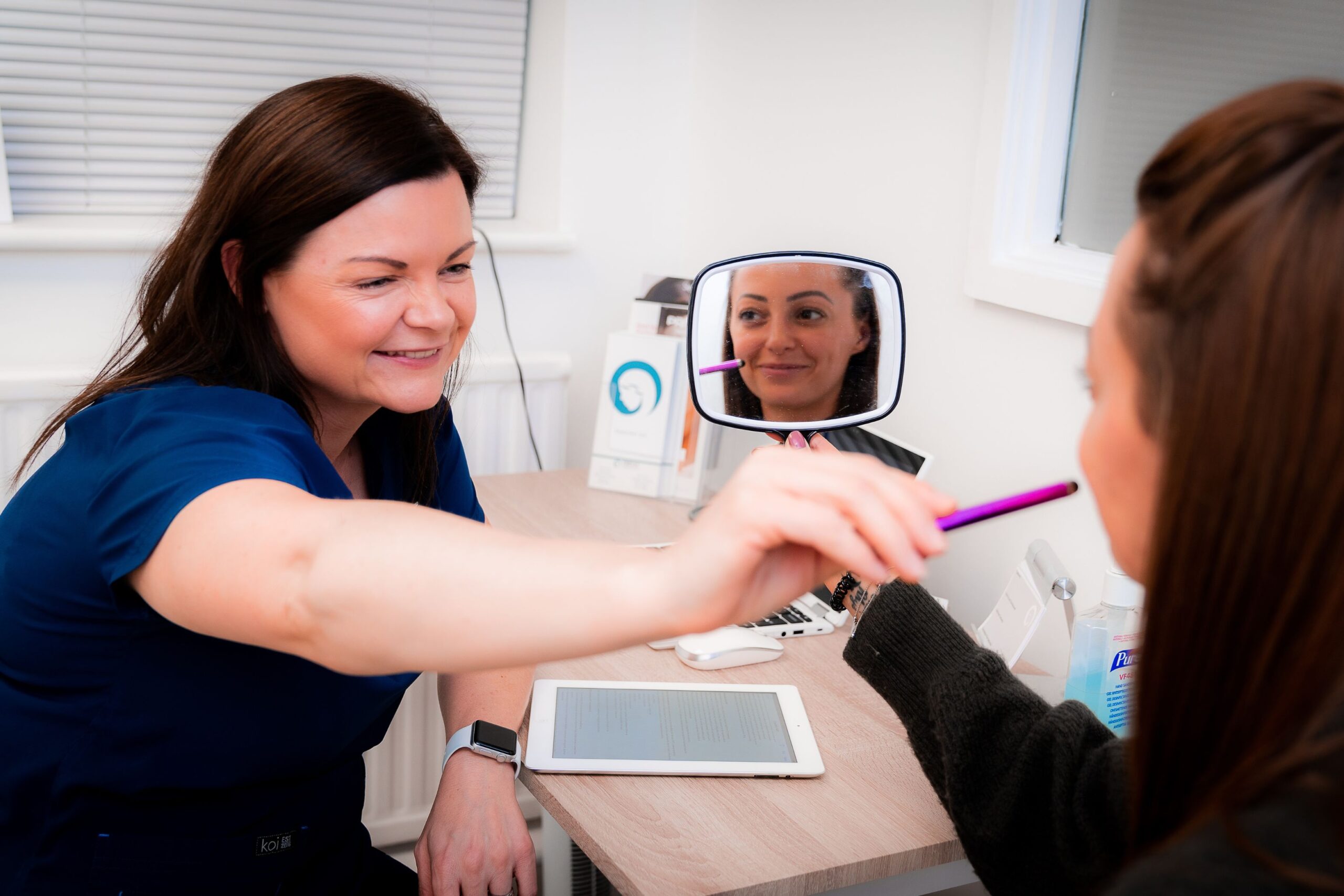Jump To Section
Botox vs Dermal Fillers: What’s the Difference and Which One is Right for You?
At Freyja Medical, one of the most common questions we receive is: “What’s the difference between Botox and dermal fillers?” Both treatments are popular for reducing signs of ageing and enhancing your natural beauty, but they work in completely different ways. Understanding the differences between Botox and fillers can help you determine the best option for your aesthetic goals.
What is Botox?
Botox, short for Botulinum Toxin, is a neuromodulator that temporarily relaxes the muscles responsible for creating expression lines. If you’ve noticed crow’s feet around your eyes, frown lines between your eyebrows, or forehead creases, Botox can help smooth these areas by reducing muscle movement.
How it works: Botox blocks the nerve signals to muscles in targeted areas, preventing them from contracting and thus softening wrinkles
Commonly treated areas: Forehead lines, frown lines (the “11s”), crow’s feet
Results: Results become noticeable within 5-7 days, with full effects seen in 10-14 days. Botox treatments typically last around 3-4 months
Price at Freyja Medical: Aesthetic anti-wrinkle injections start from £199*

What are Dermal Fillers?
Dermal fillers are injectable substances that restore volume to the skin, filling in wrinkles and plumping areas that have lost fullness over time. Unlike Botox, which affects muscle movement, fillers work by adding volume where it has diminished due to ageing.
How they work: Fillers, often composed of hyaluronic acid (a naturally occurring substance in the skin), are injected into areas requiring volume to smooth out deep lines, enhance lips, or contour the face
Commonly treated areas: Nasolabial folds (lines from the nose to the mouth), marionette lines (from the mouth to the chin), lips, cheeks, and jawline
Results: Fillers provide immediate results, with full effects visible within a few days. The results of dermal fillers last between 6-18 months depending on the filler type and area treated
Price at Freyja Medical: Dermal fillers start from £299 per ml*

Botox vs Fillers: What Can They Correct?
Both Botox and fillers are effective treatments for different concerns. Knowing the difference between Botox and fillers can help you choose the right option for your specific needs.
Botox is ideal for:
- Aesthetic Purposes:
- Medical Uses:
Botox is well-known for its cosmetic benefits, but it also has medical applications:- Teeth Grinding (Bruxism): Botox can relax jaw muscles, reducing teeth grinding and clenching, alleviating discomfort, and preventing dental issues.
- Migraines: For chronic migraine sufferers, Botox can reduce the frequency and severity of headaches by relaxing the muscles that trigger them.
- Excessive Sweating (Hyperhidrosis): Botox injections can effectively reduce excessive sweating in the underarms, hands, and feet by blocking the nerves that trigger sweat production.
Dermal Fillers are ideal for:
- Nasolabial folds (lines running from the nose to the mouth)
- Marionette lines (lines from the mouth to the chin)
- Thin or uneven lips
- Hollow or sunken cheeks
- Jawline definition
- Under-eye hollows
- Overall facial contouring

Botox and Fillers: Key Differences
To help you decide between Botox vs fillers, here’s a comparison of the key differences:
| Aspect | Botox | Dermal Fillers |
|---|---|---|
| Target | Dynamic wrinkles (caused by muscle movement) | Static wrinkles and volume loss |
| How it works | Relaxes muscles to reduce wrinkles | Adds volume to smooth lines and enhance contours |
| Common areas treated | Forehead, crow’s feet, frown lines | Cheeks, lips, nasolabial folds, marionette lines |
| Onset of results | 5-7 days | Immediate (full results in a few days) |
| Duration of results | 3-4 months | 6-18 months |
Side Effects and Considerations
While Botox and fillers are generally safe and well-tolerated, it’s important to be aware of potential side effects and considerations before undergoing treatment.
Botox Side Effects:
- Temporary bruising at the injection site
- Mild headache or flu-like symptoms post-treatment
- Rare but temporary drooping of the eyelid or brow
- Slight discomfort during injection
Dermal Filler Side Effects:
- Redness, swelling, or bruising at the injection site
- Mild lumpiness or firmness under the skin (usually settles in a few days)
- Rare but more serious side effects include allergic reactions or infection (extremely uncommon when performed by trained professionals)
Considerations:
- Consultation: Both Botox and fillers require a consultation to assess your suitability. At Freyja Medical, we discuss your medical history, allergies, and aesthetic goals before proceeding
- Temporary Nature: Both Botox and fillers offer temporary results, with Botox lasting 3-4 months and fillers lasting 6-18 months. Regular treatments are recommended to maintain results
- Combination Treatments: In some cases, Botox and fillers can be combined for a comprehensive facial rejuvenation treatment, addressing both dynamic wrinkles and volume loss in a single session

Costs of Aesthetic and Medical Treatments
At Freyja Medical, we offer both aesthetic and medical injectable treatments, providing flexibility based on your needs.
- Aesthetic anti-wrinkle injections: Prices start from £199*
- Medical treatments (e.g., teeth grinding, excessive sweating): Prices start from £409*
- Dermal filler treatments: Prices start from £299 per ml*
Our treatments are performed by trained dermatology professionals, ensuring the highest standards of care and optimal results for each patient.
Need Help Choosing the Right Treatment?
Want help determining the best treatment for you? Why not book a free consultation with one of our aesthetic specialists at Freyja Medical? We understand that choosing between Botox and dermal fillers can be confusing, but our expert team is here to guide you through the process. During your consultation, we’ll discuss your aesthetic goals and assess your needs to recommend the most suitable treatment.
Click here to book your free consultation online, or contact us directly at 01978 799 688. You can also email us at [email protected]. We look forward to helping you achieve your beauty goals!

*Prices correct as of 19/09/2024. Click here for full price list.

